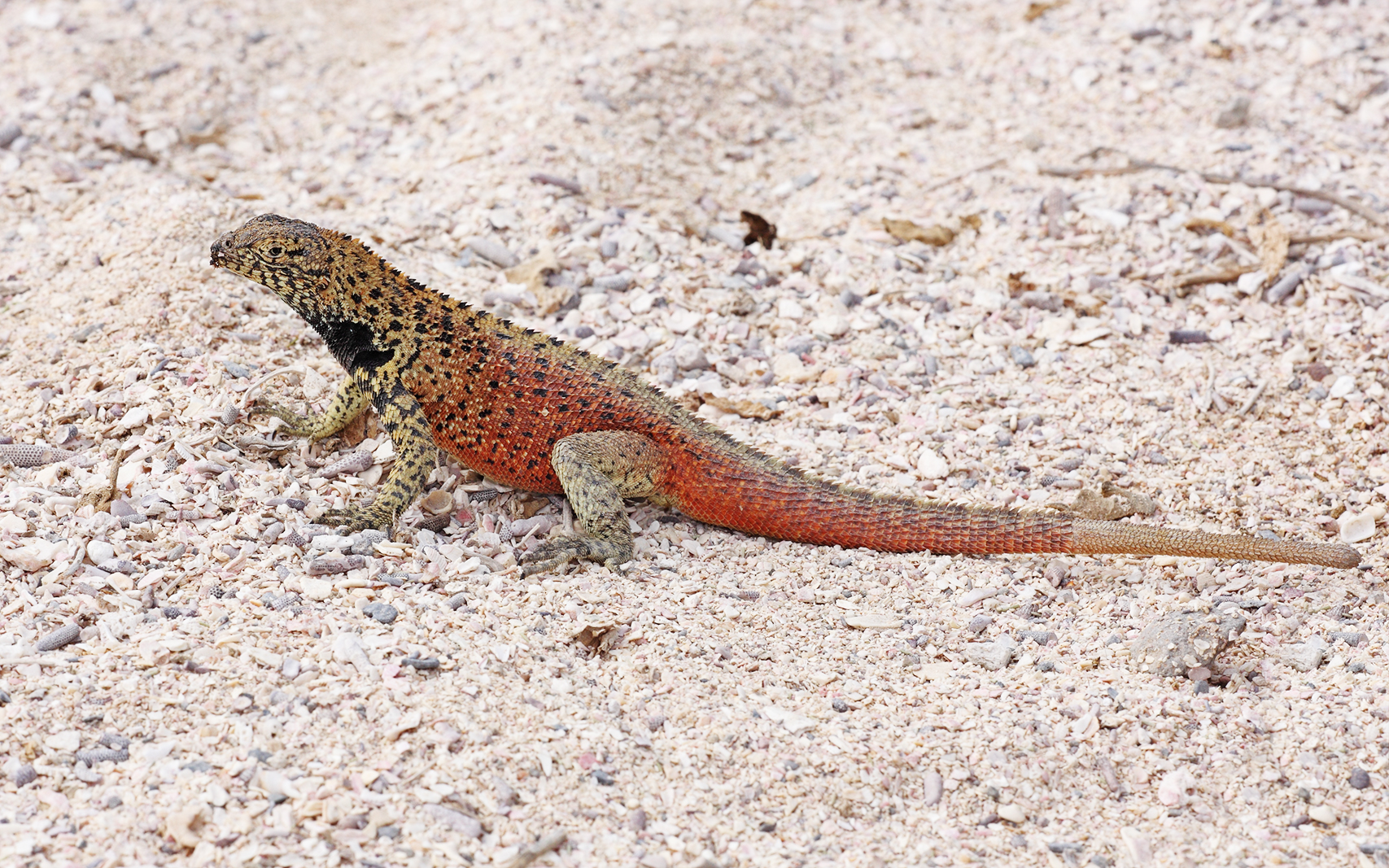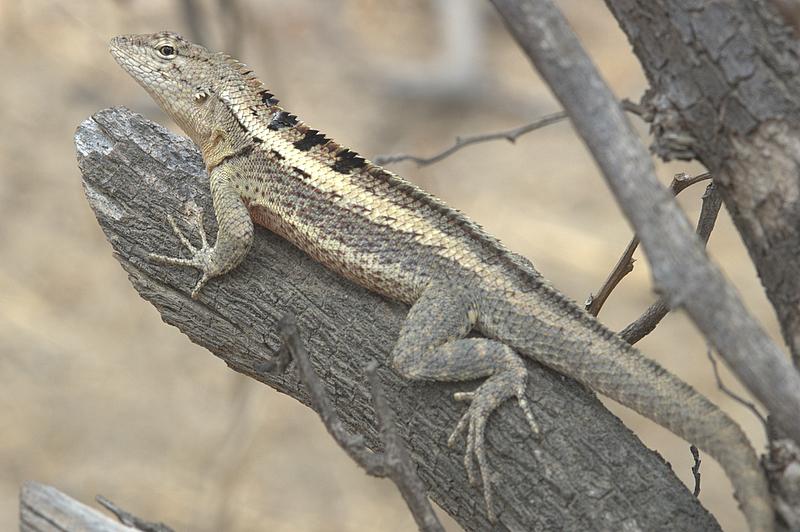Microlophus on:
[Wikipedia]
[Google]
[Amazon]
''Microlophus'' is a
"Island Biogeography of Galápagos Lava Lizards (Tropiduridae: ''Microlophus''): Species Diversity and Colonization of the Archipelago".
(.pdf) ''Evolution'' 63 (6): 1606–1626. (they are sometimes placed in ''

 Listed alphabetically by specific name.
Listed alphabetically by specific name.''Microlophus''
The Reptile Database. www.reptile-database.org. (* endemic to the Galapágos Islands). *''
genus
Genus ( plural genera ) is a taxonomic rank used in the biological classification of extant taxon, living and fossil organisms as well as Virus classification#ICTV classification, viruses. In the hierarchy of biological classification, genus com ...
of tropidurid lizards native to South America. Around 20 species
In biology, a species is the basic unit of classification and a taxonomic rank of an organism, as well as a unit of biodiversity. A species is often defined as the largest group of organisms in which any two individuals of the appropriate s ...
are recognized and 10 of these are endemic
Endemism is the state of a species being found in a single defined geographic location, such as an island, state, nation, country or other defined zone; organisms that are indigenous to a place are not endemic to it if they are also found elsew ...
to the Galápagos Islands
The Galápagos Islands (Spanish: , , ) are an archipelago of volcanic islands. They are distributed on each side of the equator in the Pacific Ocean, surrounding the centre of the Western Hemisphere, and are part of the Republic of Ecuador ...
, where they are commonly known as lava lizardsBenavides E, Baum R, Snell HM, Snell HL, Sites JW Jr (2009)"Island Biogeography of Galápagos Lava Lizards (Tropiduridae: ''Microlophus''): Species Diversity and Colonization of the Archipelago".
(.pdf) ''Evolution'' 63 (6): 1606–1626. (they are sometimes placed in ''
Tropidurus
''Tropidurus'' is a genus of reptiles. The genus includes many species of Neotropical ground lizards (family Tropiduridae). ''Tropidurus'' is the type genus of the family Tropiduridae.
Geographic range and habitat
Species in the genus ''Tropid ...
'' instead). The remaining, which often are called Pacific iguanas, are found in the Andes
The Andes, Andes Mountains or Andean Mountains (; ) are the longest continental mountain range in the world, forming a continuous highland along the western edge of South America. The range is long, wide (widest between 18°S – 20°S ...
and along the Pacific coasts of Chile, Peru, and Ecuador.
The distribution of the lava lizards and their variations in shape, colour, and behaviour show the phenomenon of adaptive radiation
In evolutionary biology, adaptive radiation is a process in which organisms diversify rapidly from an ancestral species into a multitude of new forms, particularly when a change in the environment makes new resources available, alters biotic int ...
so typical of the inhabitants of this archipelago. One species occurs on all the central and western islands, which were perhaps connected during periods of lower sea levels, while one species each occurs on six other more peripheral island
An island (or isle) is an isolated piece of habitat that is surrounded by a dramatically different habitat, such as water. Very small islands such as emergent land features on atolls can be called islets, skerries, cays or keys. An island ...
s. All have most likely evolved from a single ancestral species. However, as usual for the Tropiduridae, they can change their colour individually to some extent, and members of the same species occurring in different habitats also show colour differences. Thus, animals living mainly on dark lava
Lava is molten or partially molten rock (magma) that has been expelled from the interior of a terrestrial planet (such as Earth) or a moon onto its surface. Lava may be erupted at a volcano or through a fracture in the crust, on land or un ...
are darker than ones that live in lighter, sandy environments.
Species

 Listed alphabetically by specific name.
Listed alphabetically by specific name.The Reptile Database. www.reptile-database.org. (* endemic to the Galapágos Islands). *''
Microlophus albemarlensis
''Microlophus albemarlensis'', the Galápagos Lava lizard, also known as the Albemarle Lava lizard, is a species of Lava lizard. It is endemic to the Galápagos Islands, where it occurs on several islands in the western archipelago: the large ...
'' – Galápagos lava lizard*
*''Microlophus arenarius
''Microlophus arenarius'' is a species of South American lava lizard in the family Tropiduridae. The species is endemic to Peru
, image_flag = Flag of Peru.svg
, image_coat = Escudo nacional del Perú.svg
, other ...
''
*''Microlophus atacamensis
''Microlophus atacamensis'', the Atacamen Pacific iguana, is a species of lava lizard that is endemic to Chile
Chile, officially the Republic of Chile, is a country in the western part of South America. It is the southernmost country in ...
'' – Atacamen Pacific iguana
*''Microlophus barringtonensis
''Microlophus barringtonensis'' or the Santa Fe lava lizard is a species of lava lizard or a population of ''Microlophus albemarlensis''. It inhabits Santa Fe island
Santa Fe Island (Spanish: ''Isla Santa Fe''), also called Barrington Island ...
'' – Santa Fe lava lizard*
*''Microlophus bivittatus
''Microlophus bivittatus'', the San Cristóbal lava lizard, is a species of lava lizard endemic to San Cristóbal Island in the Galápagos Islands. The species is commonly attributed to the genus ''Microlophus'' but has been attributed to the g ...
'' – San Cristóbal lava lizard*
*''Microlophus delanonis
''Microlophus delanonis'', the Española lava lizard or Hood lava lizard, is endemic to the Galapagos island of Española. The species is commonly attributed to the genus ''Microlophus'' but has been attributed to the genus ''Tropidurus
' ...
'' – Española lava lizard or Hood lava lizard*
*''Microlophus duncanensis
''Microlophus duncanensis'', the Pinzón lava lizard, is a species of lava lizard endemic to the Galapagos Island of Pinzón. The species is commonly attributed to the genus ''Microlophus'' but has been attributed to the genus ''Tropidurus
...
'' – Pinzón lava lizard*
*''Microlophus grayii
''Microlophus grayii'', commonly known as the Floreana lava lizard, is a species of lava lizard in the family Tropiduridae. The species is endemic to the Galapagos island of Floreana.
Taxonomy
The species, ''Microlophus grayii'', is commonl ...
'' – Floreana lava lizard*
*''Microlophus habelii
''Microlophus habelii'', commonly known as the Marchena lava lizard, is a species of lava lizard endemic to the Galapagos island of Marchena.
Etymology
The specific name, ''habelii'', is in honor of German-American naturalist Simeon Habel.Be ...
'' – Marchena lava lizard*
*''Microlophus heterolepis
The ''Microlophus heterolepis'' is a species of lava lizard endemic to Chile and Peru
, image_flag = Flag of Peru.svg
, image_coat = Escudo nacional del Perú.svg
, other_symbol = Great Seal of the State ...
''
*''Microlophus indefatigabilis
The Santa Cruz lava lizard (''Microlophus indefatigabilis'') is a species of lava lizard endemic to the Galapagos island of Santa Cruz.
Description
They are identifiable by a brown body with scattered black and white blotches with a distinct ...
'' – Santa Cruz lava lizard *
*'' Microlophus jacobii'' Santiago lava lizard *
*''Microlophus koepckeorum
''Microlophus koepckeorum'', commonly known as Frost's iguana, is a species of lava lizard in the family Tropiduridae. The species is endemic to Peru.Microlophus occipitalis
''Microlophus occipitalis'', colloquially known as the knobbed Pacific iguana, is a lizard included within the Tropiduridae family. It is a member of the ''Microlophus'' genus and thus also considered a lava lizard. The knobbed Pacific iguana i ...
'' – knobbed Pacific iguana
*'' Microlophus pacificus'' – Pinta lava lizard or common Pacific iguana*
*''Microlophus peruvianus
''Microlophus peruvianus'', the Peru Pacific iguana, is a species of lava lizard endemic to the Ecuador, Peru, and Chile. The species is commonly attributed to the genus ''Microlophus'' but has been attributed to the genus ''Tropidurus
''Trop ...
'' – Peru Pacific iguana
*'' Microlophus quadrivittatus'' – four-banded Pacific iguana
*''Microlophus tarapacensis
The Tarapaca Pacific iguana (''Microlophus tarapacensis'') is a species of lizard in the family Tropiduridae.
It is endemic to Chile
Chile, officially the Republic of Chile, is a country in the western part of South America. It is the so ...
'' – Tarapaca Pacific iguana
*'' Microlophus theresiae'' – Theresia's Pacific iguana
*'' Microlophus theresioides'' – ''corredor de pica'' (in Spanish)
*'' Microlophus thoracicus'' – Tschudi's Pacific iguana
*''Microlophus tigris
''Microlophus tigris'', the tiger Pacific iguana, is a species of lava lizard endemic to Peru.Microlophus yanezi'' – Yanez's lava lizard
''
Nota bene
(, or ; plural form ) is a Latin phrase meaning "note well".
It is often abbreviated as NB, n.b., or with the ligature
and first appeared in English writing . In Modern English, it is used, particularly in legal papers, to draw the atten ...
'': A binomial authority
In taxonomy, binomial nomenclature ("two-term naming system"), also called nomenclature ("two-name naming system") or binary nomenclature, is a formal system of naming species of living things by giving each a name composed of two parts, bot ...
in parentheses indicates that the species was originally described in a genus other than ''Microlophus''.
References
External links
Further reading
* Duméril AMC, Bibron G (1837). ''Erpétologie générale ou Histoire naturelle complète des Reptiles. Tome quatrième'' olume 4 Paris: Roret. ii + 571 pp. (''Microlophus'', new genus, pp. 334–335). (in French). Lizards of South America Lizard genera Taxa named by Gabriel Bibron Taxa named by André Marie Constant Duméril {{lizard-stub